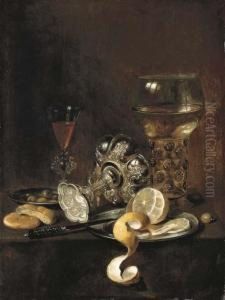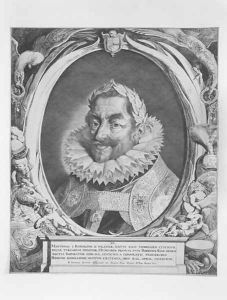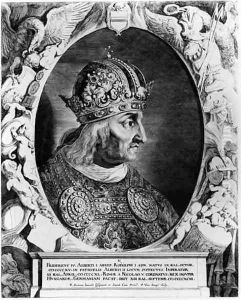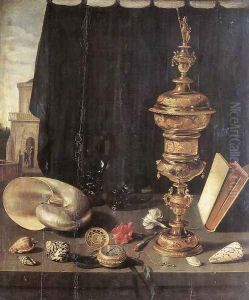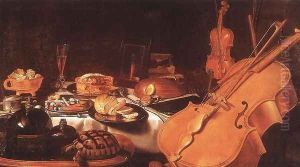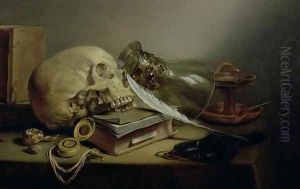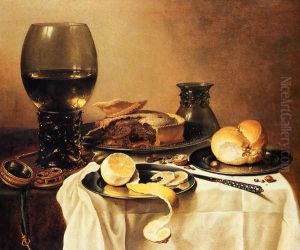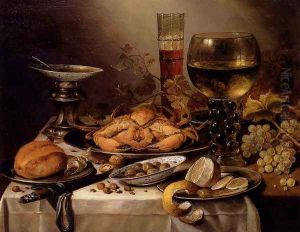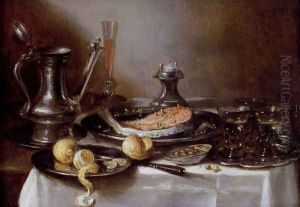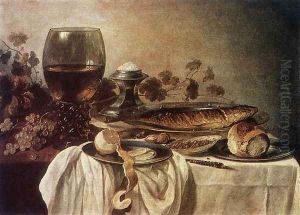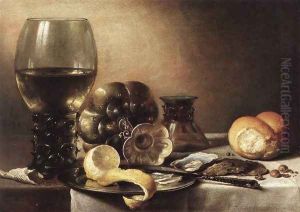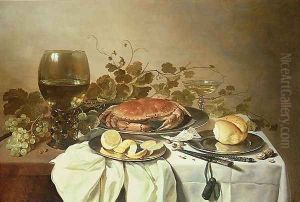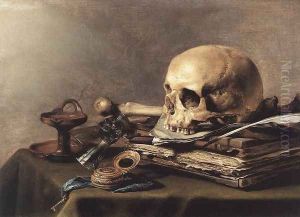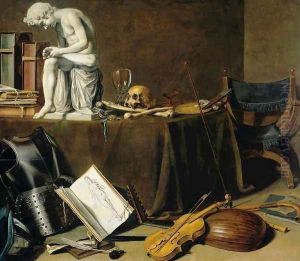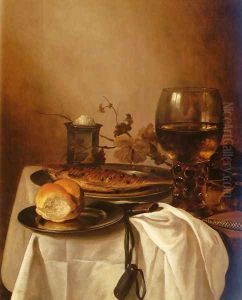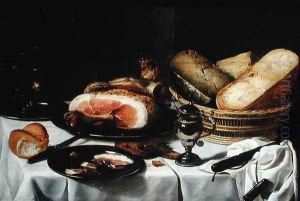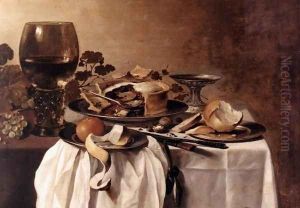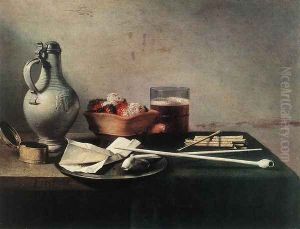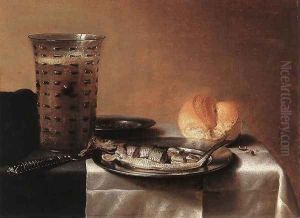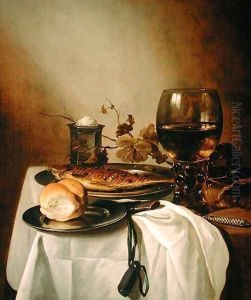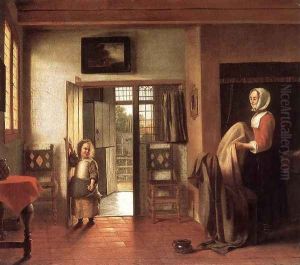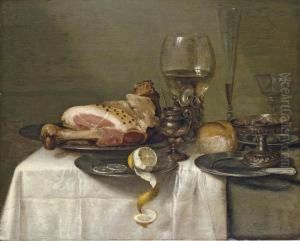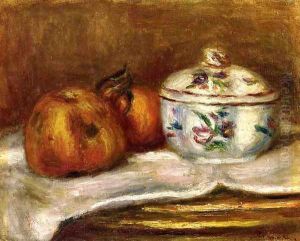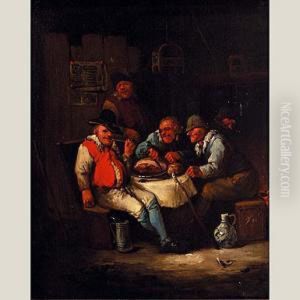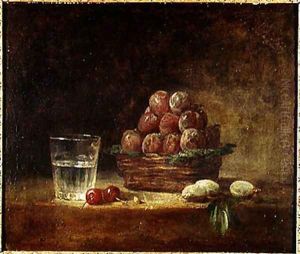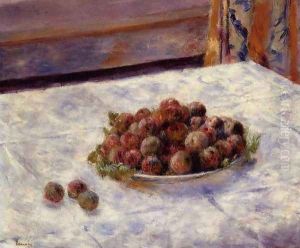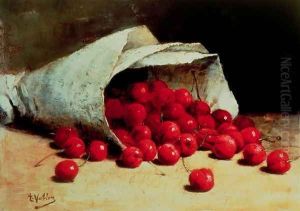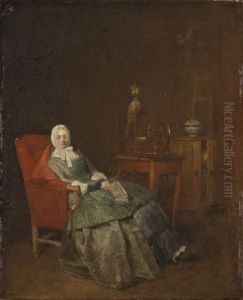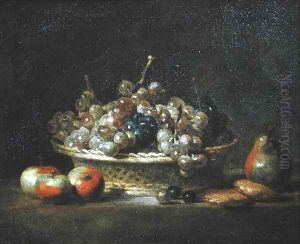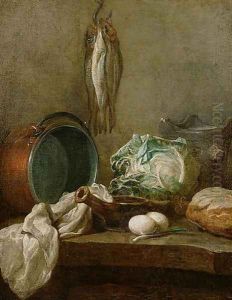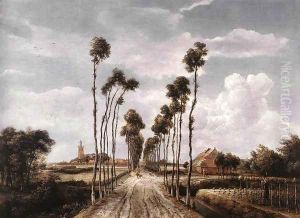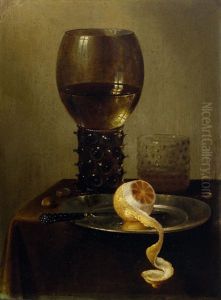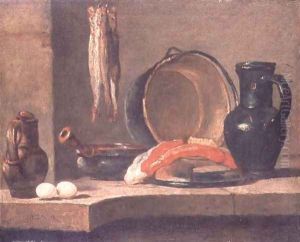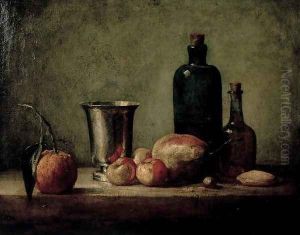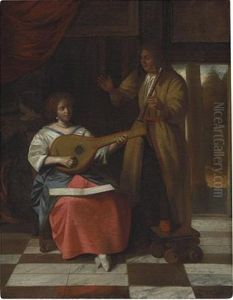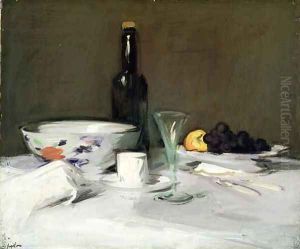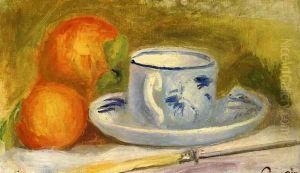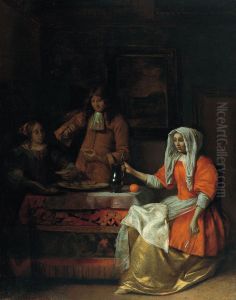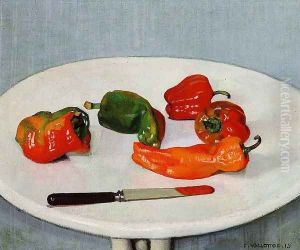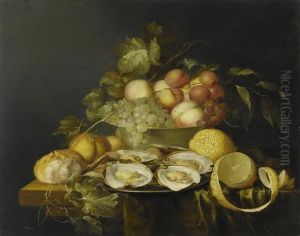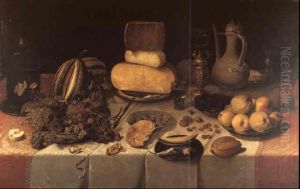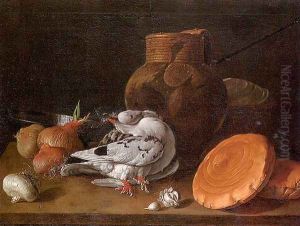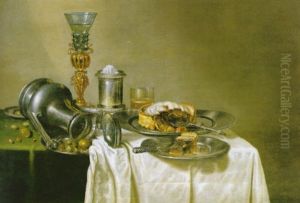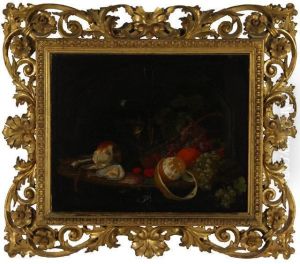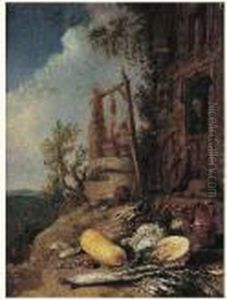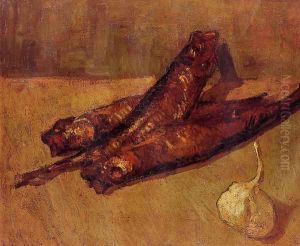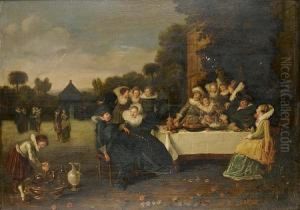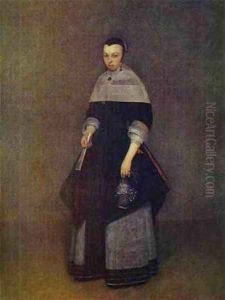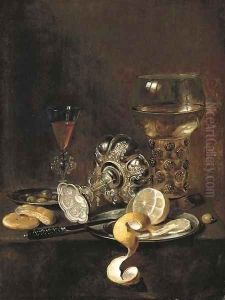





A giant roemer, an upturned goblet, a glass, bread, a knife and a partly-peeled lemon on a platter, on a table
-
About Reproduction
Bring the timeless beauty of Pieter Claesz.'s A giant roemer, an upturned goblet, a glass, bread, a knife and a partly-peeled lemon on a platter, on a table into your home with a handmade oil painting reproduction. Carefully recreated on canvas by skilled artists using traditional techniques, this piece captures the delicate brushwork, subtle light, and vibrant color of the original masterpiece. With museum-level quality and rich texture, it brings elegance and artistic depth to any space. Enjoy free shipping and make this masterpiece a part of your personal collection.
-
Original Description
Pieter Claesz.'s still life "A giant roemer, an upturned goblet, a glass, bread, a knife and a partly-peeled lemon on a platter" epitomizes Dutch Golden Age artistry with its masterful play of textures and light. Painted circa 1635, this compact masterpiece measures merely 24 x 35 cm yet creates immense visual poetry through its meticulous arrangement of shimmering glassware against coarse bread and waxy lemon peel. The composition exemplifies "ontbijtjes" (breakfast pieces), a subgenre Claezs pioneered alongside Willem Claesz Heda. What elevates this work is its profound symbolism - the overturned roemer suggesting life's transience, the half-peeled lemon representing earthly bitterness beneath beautiful surfaces. The artist's signature monochrome palette of silvery greys and golden browns achieves remarkable luminosity through layered glazing techniques, influencing generations of still life painters. As transitional works between early banquet scenes and later vanitas paintings, Claesz's compositions hold pivotal importance in Netherlandish art history.
For contemporary interiors, this artwork's intimate scale makes it perfect for study nooks or dining rooms where viewers can appreciate its exquisite details. Positioned at eye level against taupe or olive walls, its warm neutrals would harmonize with mid-century modern or rustic-chic decor. Consider floating the reproduction in a blackened oak frame to echo the painting's dark background, paired with matte brass accent lighting to enhance its gilded tones. In office spaces, it lends sophistication to executive areas when displayed alongside minimalist glassware or leather-bound books. For full visual impact, maintain 60-80cm clearance around smaller reproductions, or opt for large-format prints to transform feature walls. The painting's textured elements inspire material pairings - linen table runners echoing the bread's crust, mercury glass vessels mirroring the roemer's faceted surface, creating thoughtful aesthetic dialogues between artwork and space.
-
Lead Time & Shipping
When you order this oil painting replica, it typically takes 2-3 weeks to paint. If the artwork is more complex, it might need a little more time to ensure the best quality. Once it's ready, we'll send you a photo for your approval. After you give the green light, we'll ship it to you for free.
-
Return & Refund
We believe in the quality of our hand-painted oil painting reproductions, and your satisfaction is our priority. If for any reason, you are not completely satisfied with your purchase, we offer a 45-day return policy. You can return your artwork within 45 days of receipt and receive a full refund. Please note that the artwork must be returned in the original packaging and in the same condition as it was received.





















